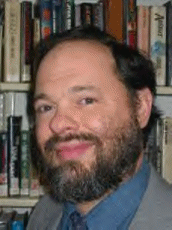Martin Luther King’s Deeper Legacy
Great tribute to Martin Luther King, Jr. in an Op-Ed by Taylor Branch in today’s New York Times. The article goes waaaaay beyond the standard establishment tributes, and even the progressive pieces that recognize the unity of his call to end racial injustice and his call to end the Vietnam war.
I particularly love these two paragraphs–not in any way to trivialize the struggle of blacks, but to clearly show how many other social movements (including the environmental movement, which Branch doesn’t mention) drew strength, inspiration, and tactics from King and the Civil Rights movement generally:
Dr. King said the movement would liberate not only segregated black people but also the white South. Surely this is true. You never heard of the Sun Belt when the South was segregated. The movement spread prosperity in a region previously unfit even for professional sports teams. My mayor in Atlanta during the civil rights era, Ivan Allen Jr., said that as soon as the civil rights bill was signed in 1964, we built a baseball stadium on land we didn’t own, with money we didn’t have, for a team we hadn’t found, and quickly lured the Milwaukee Braves. Miami organized a football team called the Dolphins.
The movement also de-stigmatized white Southern politics, creating two-party competition. It opened doors for the disabled, and began to lift fear from homosexuals before the modern notion of “gay” was in use. Not for 2,000 years of rabbinic Judaism had there been much thought of female rabbis, but the first ordination took place soon after the movement shed its fresh light on the meaning of equal souls. Now we think nothing of female rabbis and cantors and, yes, female Episcopal priests and bishops, with their colleagues of every background. Parents now take for granted opportunities their children inherit from the Montgomery bus boycott.
King was still alive when I started, before I even reached my teens, exploring nonviolent social change. Over and over again, I found evidence that nonviolent mass movements are far more likely than armed struggle to create lasting, powerful social progress, and that the revolutions achieved nonviolently are much harder to corrupt (not impossible, as we saw under Indira Gandhi)–and yes, organized mass nonviolence can even work against brutal dictatorships. Some of the most effective resistance to the Nazis was through nonviolence, including (but far from limited to) the famous heroic defiance of the King of Denmark after he surrendered his country, riding his horse through the streets of Copenhagen with a yellow star pinned to his clothing in solidarity with the Jews–and inspiring his Danes to save thousands of Jewish lives with a clandestine boatlift to neutral Sweden. And of course there was the massive nonviolent revolt led my M.K. Gandhi against the brutal British colonial regime in India.
In our own time, we’ve seen nonviolence achieve miracles, not only in the US Civil Rights struggle, but also, to name a few examples,
• Solidarity driving the Communists from power in Poland
• Safe energy activists at Seabrook (I was there!) and around the country making it politically impossible to build more nuclear power plants for the next three decades (we might have to fight that one again, I’m afraid)
• The end of apartheid in South Africa, in a struggle that was largely nonviolent (contrast that with Zimbabwe, where the “freedom fighter” Robert Mugabe turned out to be every bit as much a dictatorial thug as Ian Smith had been)
I totally agree with Branch that many of the social movements of the last four years would have been much harder to envision and carry out had it not been for the Civil Rights movement. That movement inspired us not to take injustice lying down, and showed us tools to fight for justice that maintained our dignity, that needed no weapons or weapons training, and that created long-lasting change. Labor, environmentalists, feminists, and poor people’s movements are just some of the many who have learned from Dr. King and his movement.
For more on effective nonviolent organizing, I strongly recommend the works of Gene Sharp. I read the three-volume The Politics of Nonviolent Action more than 25 years ago, and it still left an impresion on me. Not an easy read, but incredibly wrthwhile.
And meanwhile, I’ll have to put Taylor Branch’s 3-part history of the Civil Rights movement, Parting the Waters/Pillar of Fire/At Canaan’s Edge, on my reading list.



0 Comments:
Post a Comment
<< Home